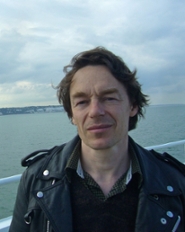
Dirk Braeckman has spent the past 40 years developing an impressive portfolio. Working with the medium of photography, he occupies a distinctive place within the visual arts.
Braeckman has taken part in numerous exhibitions both nationally and internationally. He has had solo shows at The Modern Art Museum of Fort Worth (USA), LE BAL (Paris), De Pont (Tilburg), De Appel (Amsterdam), S.M.A.K. (Ghent), BOZAR (Brussels), M (Leuven) and ROSEGALLERY (Santa Monica, CA).
Braeckman’s works are part of important private and public collections around the world, including in FRAC Nord-Pas de Calais (Dunkirk), Sammlung Goetz (Munich), De Pont (Tilburg) and Fondation Nationale d’Art Contemporain (Paris), Central Museum (Utrecht), and Musée d’Art Contemporain et Moderne (Strasbourg). There are also several publications on his artistic practice and oeuvre.
In 2017, he represented Belgium at the 57th Venice Biennale.
In 2021 Braeckman was invited to take part in the 34th Bienal de São Paulo ‘Though it’s dark, still I sing’.
The Royal Family of Belgium commissioned a permanent installation in the Sphinx Room of the Royal Palace in Brussels.
Braeckman has been a KVAB member since 2019.
www.ftn-books.com has several Braeckman publications available
















































































